Fashion brands said ‘never again’ but women are still being exploited in supply chains
On the anniversary of the tragic Rana Plaza factory collapse, Lizzie Rivera explores how fast fashion is fuelling violence against women

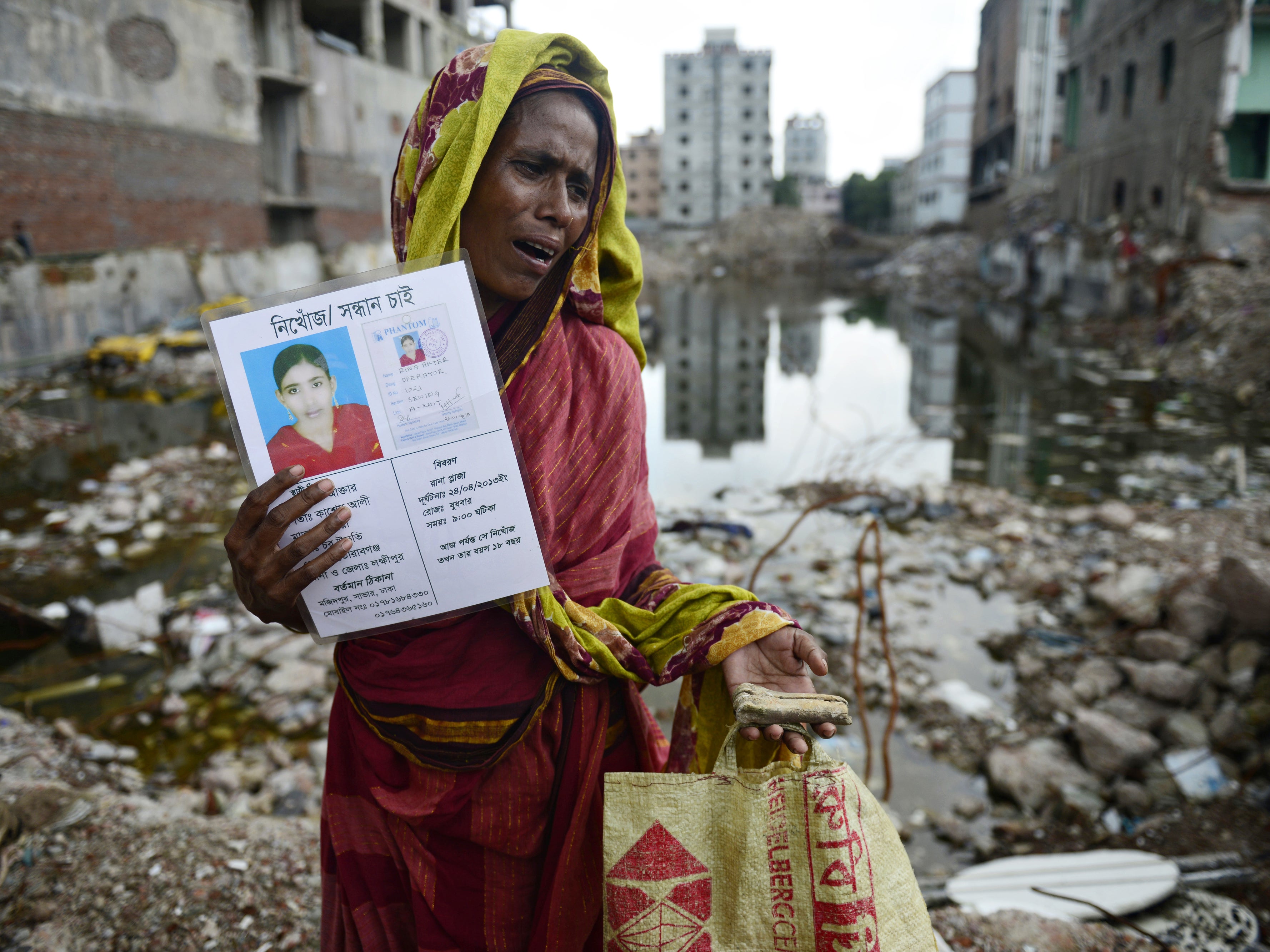
The 24 April marks the ninth anniversary of the 2013 Rana Plaza collapse. You might remember watching with horror as the disaster unfolded, in which at least 1,134 garment workers died – mostly young women sewing clothes for fast fashion brands – and a further 2,500 were critically injured.
It is hard to forget the testimonies in which said workers begged not to enter the building that day because it was common knowledge it was unsafe, and still they were forced to go in.
That year, fashion brands across the world said never again. Nine years later, millions of women are still being exploited in fashion supply chains.
The ongoing problems with building safety is a symptom of a deeper issue. It’s estimated that up to 80 per cent of garment workers are women and their plight is fundamentally linked to the oppression of women in patriarchal societies.
There is little regard for their safety and even less value placed on their work, and brands are exploiting this for cheap labour. Meanwhile, fashion advertising dubiously suggests brands are allies in women’s empowerment.
Fashion’s gender-based violence crisis
The A Stitch in Time Saved None: How Fashion Brands Fuelled Violence in the Factory and Beyond report published by labour rights group Asia Floor Wage Alliance (Afwa), reveals a very different story.
It explicitly states: “Brands rely on the secondary position of women in society to keep costs low and amass superprofits by paying poverty-level wages.”
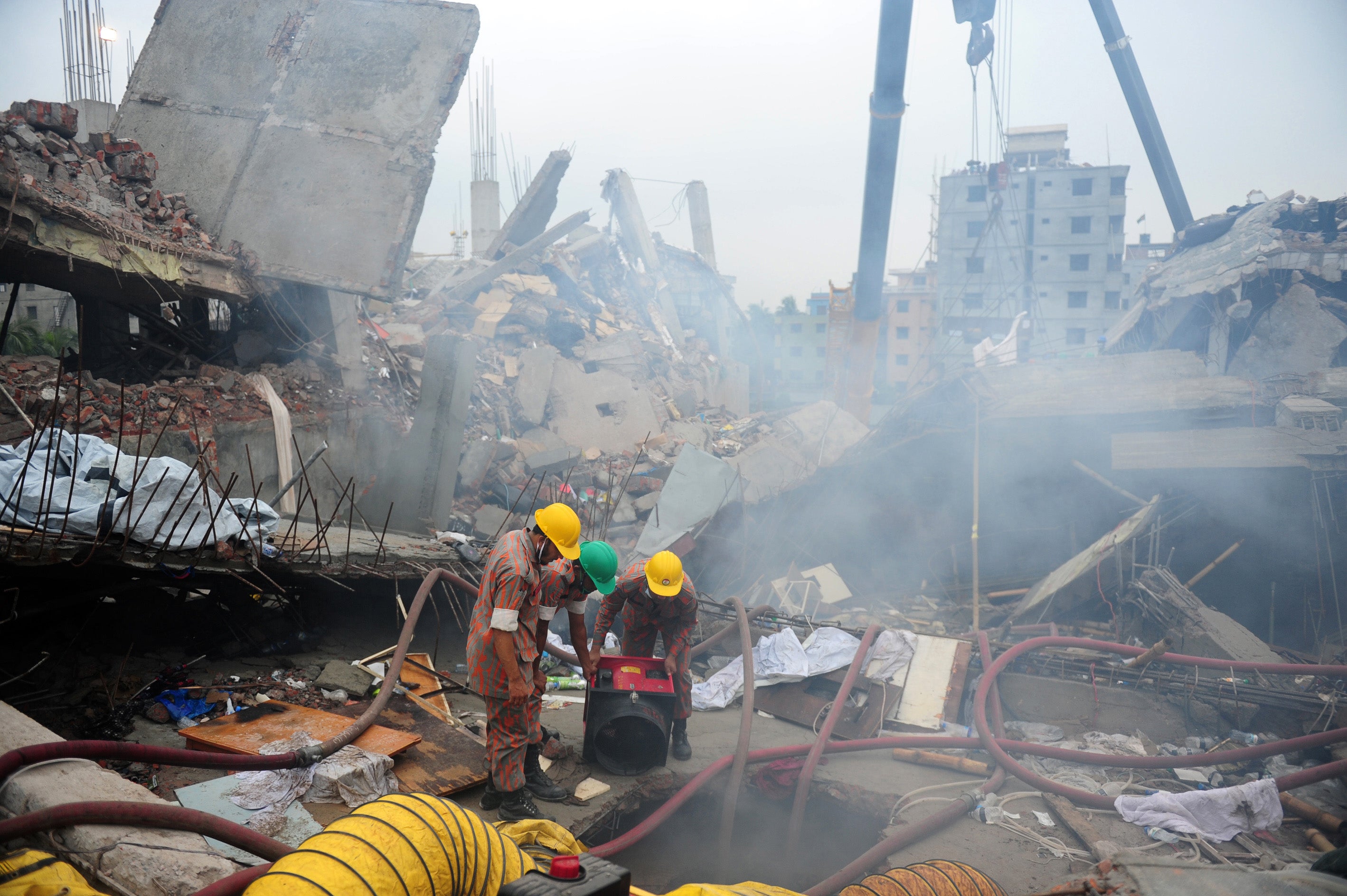
The report documents how this is not simply a case of brands looking the other way and pretending not to know. It’s endemic to their business model: “Brands are able to dictate the terms of production, requiring ever higher production targets at ever lower rates, leading to high-pressure work environments in which management, who are typically men, employ tactics like bullying, abuse, and harassment to speed up the work process and discipline the predominantly female workers.”
Connecting the dots, it reports that this economic insecurity leads women to tolerate or refrain from reporting unwanted and abusive behaviours – especially as this may lead to outcomes that put them in even more precarious situations.
“In the past we have seen cases where when trade unions raise issues of gender-based violence,” explains Afwa’s South Asia Coordinator, Abiramy Sivaloganathan. “Brands, instead of addressing it, stop all sourcing from the factory. Even when trade unions specifically demand that the sourcing to the factory must not be cut down due to the trade union raising gender-based-violence related issues, brands do not heed that demand, which then leads to women workers in the factory losing [their] jobs.
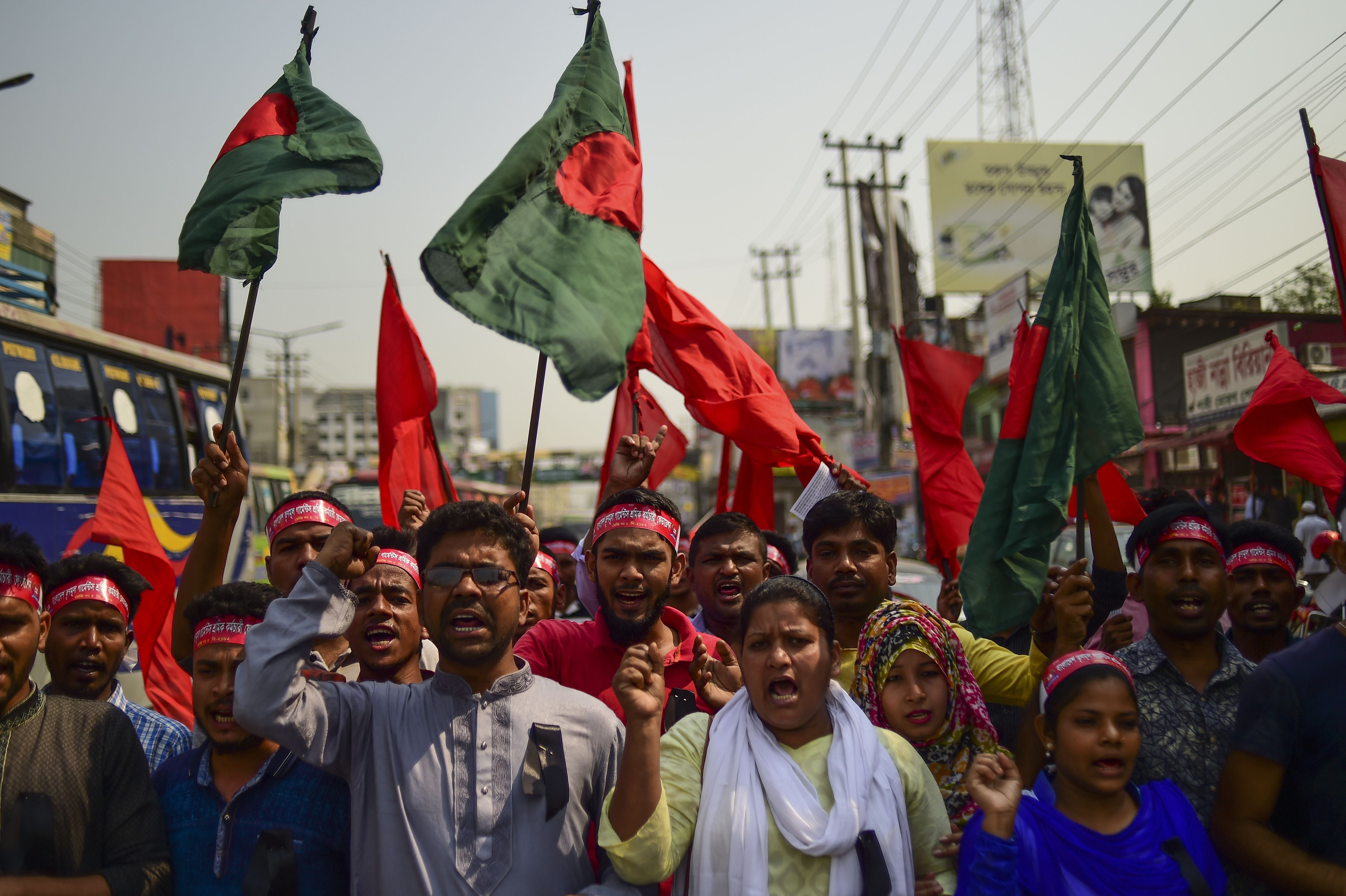
“This has many adverse consequences and can be seen as a form of union busting. Victims and survivors get blamed for job loss by other workers and so other women workers stop raising issues of gender-based violence, as they worry they and their co-workers will lose their jobs. Practices like these by fashion brands reinforce and perpetuate that violence.”
Violence is thought to have increased during the pandemic – and not only on the production lines, but during commutes and in employer-provided factory dorms – fuelled, again, by brand behaviour.
It’s been well documented that rather than protecting their workers, many brands protected their profits and committed “wage theft” during Covid, refusing to pay for orders that had already been completed.
At the time it was published, The Fired, Then Robbed report by the Workers Rights Consortium (WRC) estimated that at least $500m (£360m) in severance pay was owed to the millions of garment workers who lost their jobs due to the pandemic across the globe.
This equates to an average of $1,000 (£720) per garment worker – equivalent to five months’ wages. As such, the WRC reported that more than two-thirds of workers or members of their household skipped meals or reduced their quality. Workers were forced to choose between going hungry and going deeper into debt. At the same time, online fashion sales soared and fast fashion shops reopened to queues that extended down the street.
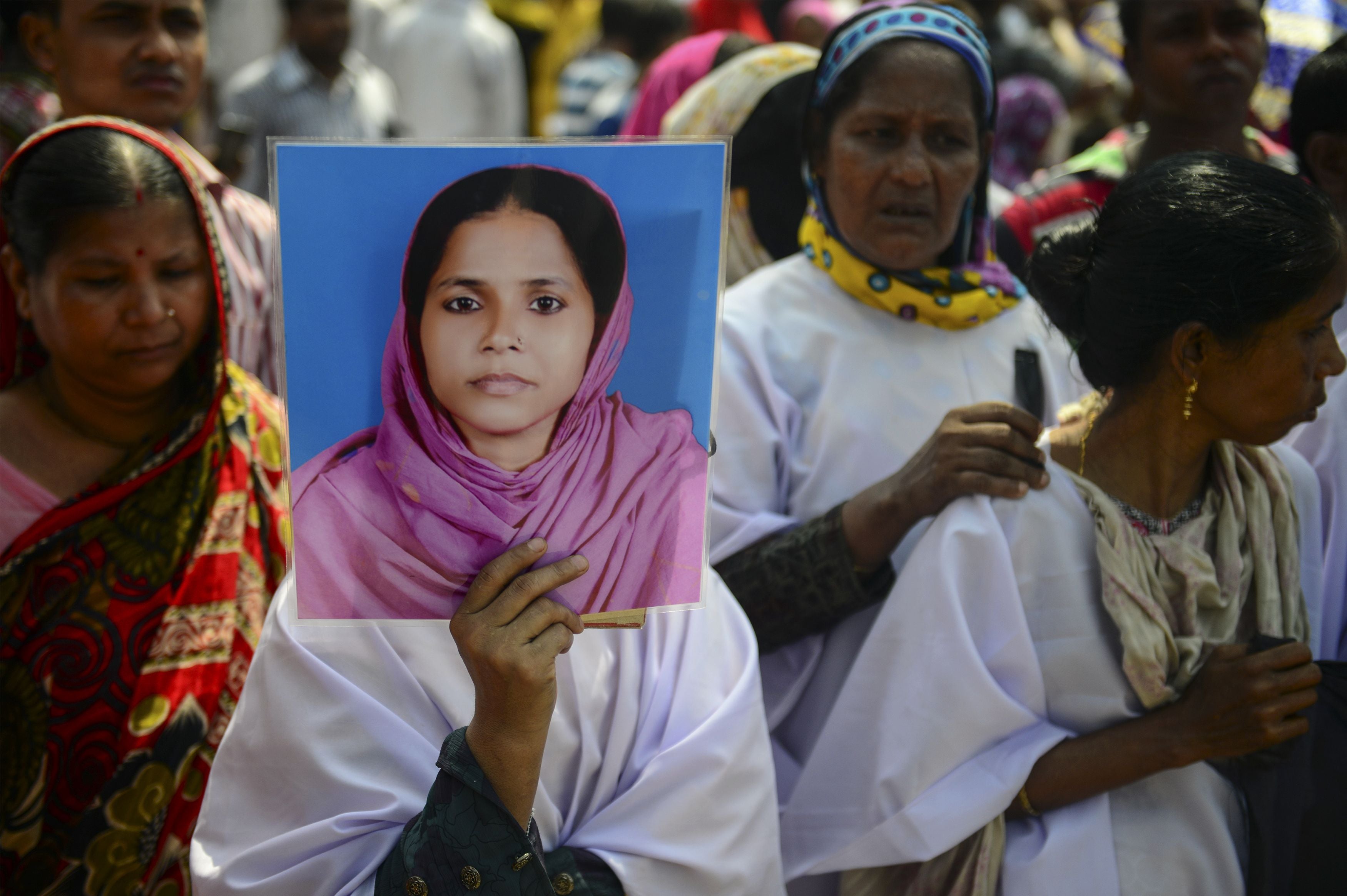
Justice for Jeyasre
“The global garment industry has been structured to fail women workers who are paid the least and find themselves in the most coercive environments,” explains JJ Rosenbaum, executive director of international labour rights group, Global Labour Justice – International Labour Rights Forum.
Even though this behaviour has been widespread in factories since the early days of garment manufacturing, the framing of exploitation as gender-based violence and harassment (GBVH) is relatively new.
It’s a powerful lens through which to look at the realities of the fashion industry. It’s uniting union leaders across different garment-producing countries, who are documenting cases of GBVH, as well as engaging in collective bargaining with brands to eliminate it from the factory floor.
Earlier this month, H&M signed a landmark agreement to “eliminate GBVH” at one of its largest Indian suppliers. This followed the murder and alleged rape of a young garment worker by her supervisor last January and a successful #JusticeForJeyasre campaign by a coalition of unions.
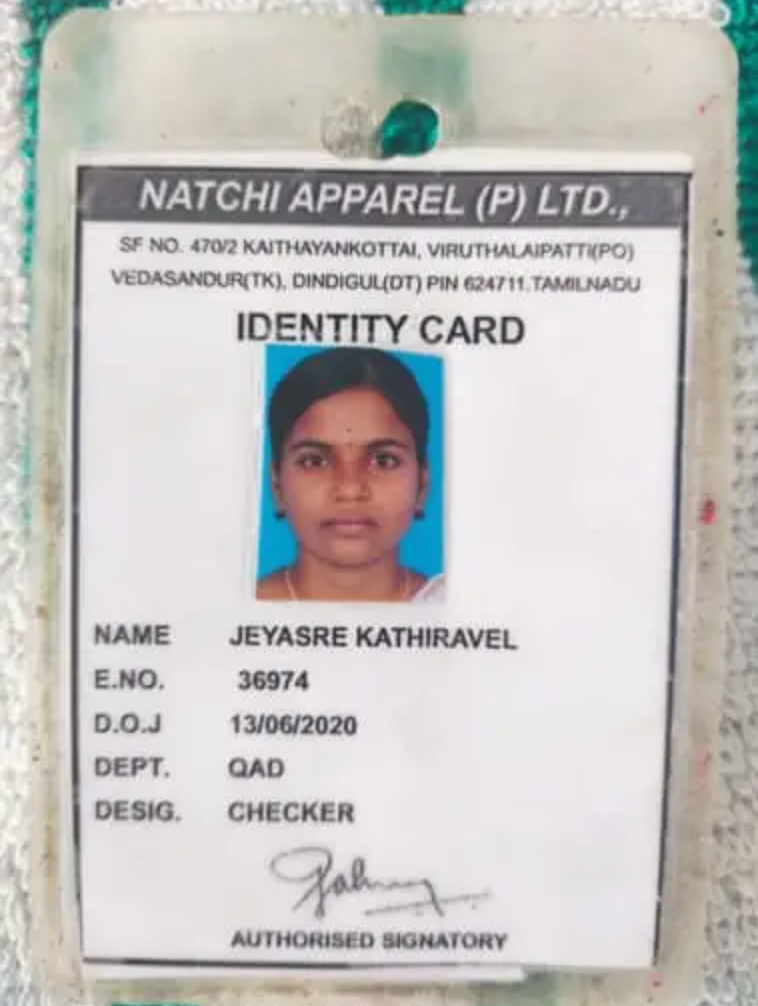
Jeyasre Kathiravel was a young Dalit woman, belonging to the lowest caste, who worked nights at an Eastman factory so she could attend university. It is alleged that her supervisor had been sexually harassing her for months but despite her attempts to report the harassment, nothing was done.
It has taken more than a year of campaigning, negotiating and activism to get to this agreement, and it is hoped it signifies the beginning of justice for all female workers. But, there is still a long way to go. As one union worker puts it: “We’ve lost too many women because of gender-based violence in this industry. For this one case, we had a lot of evidence. But, there have been rapes and murders that we haven’t had enough evidence for. That doesn’t mean they don’t exist.”
It’s unacceptable to wait for the next rape or murder – or building collapse – for brands to begin to take responsibility for the role they play in the oppression of women. Support is everything and brands need to start supporting the women who make their clothes, now.
The women at the forefront of the fight for a fashion revolution
Five female union leaders share their experiences of fighting for female garment workers’ rights across Asia.
1. Dian Septi Trisnanti, Indonesia
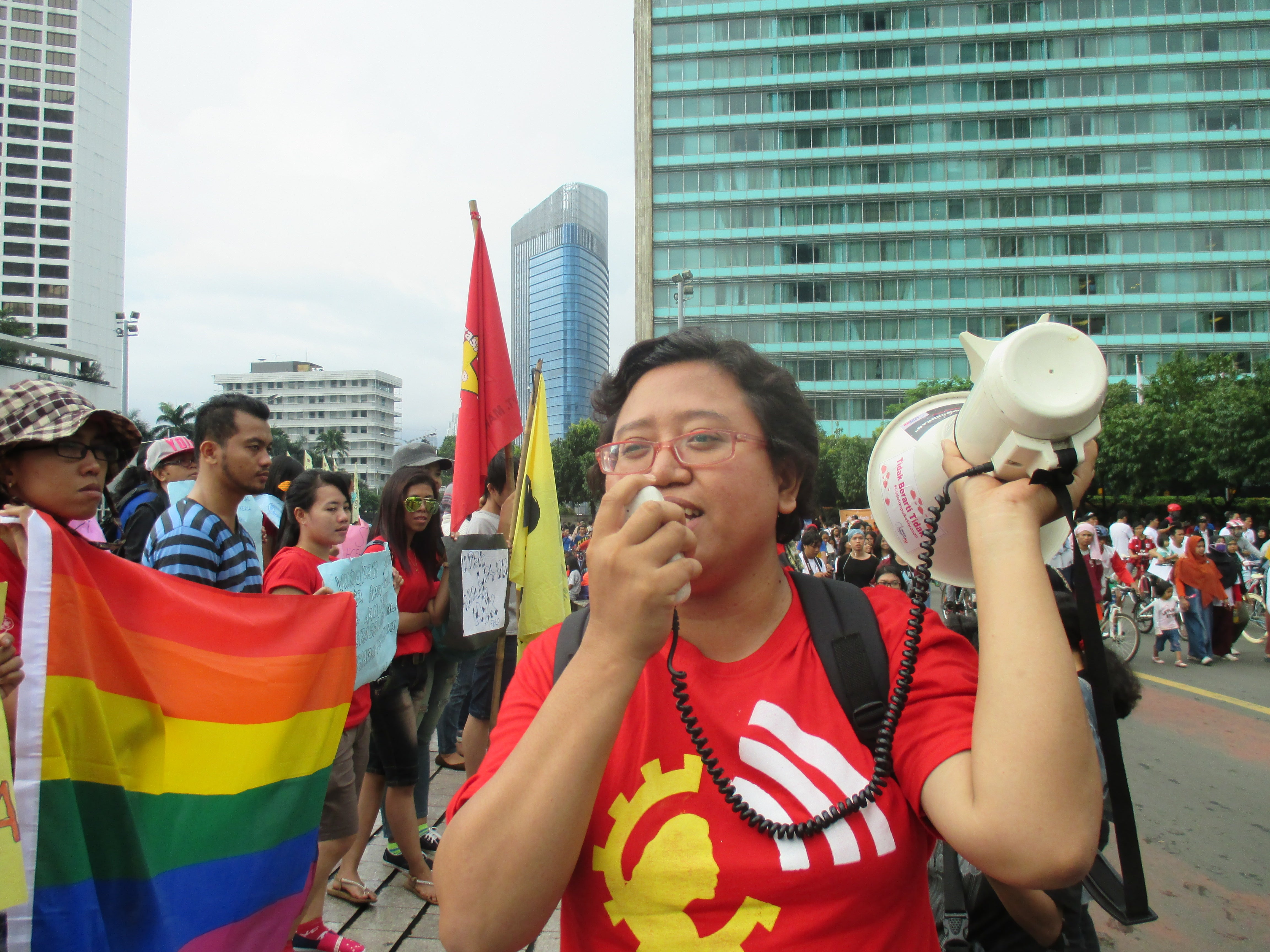
Chair of the Federation of Indonesian United Trade Unions, co-producer of video documentary Angka Jadi Suara (Numbers Become Voices) that captures gender-based violence experienced by women workers in their daily lives.
Helping other women is healing for me. We are oppressed, yet we stand in solidarity with each other. We face hardship, yet we share our kindness.
That’s what inspires me to keep going when I’m being arrested and beaten by police officers for protesting. It empowers me to continue to speak out when the board members or bosses I’m negotiating with speak to me or touch me inappropriately, even though the common response is: “Maybe he was just trying to be nice”.
I want women around the world to know the story behind their clothes, the story of exploitation. I want them to know so they stand in solidarity and help the voices of women garment workers to be heard.
I started out as a journalist and soon realised it doesn’t matter what industry you’re in – wherever we work, women face similar oppression.
I find working in the garment industry a lot of pressure and it can be hard to handle. We receive a lot of cases detailing women’s abuse, including sexual harassment and rape. It’s so common we still have to put up signs in factories that say: “This is a sexual harrassment-free zone”.
Despite their low wages, female garment workers are often the breadwinners, but our culture refuses to recognise that. Women, so used to being reduced, don’t see it in themselves, either. The fact is that brands from the west exploit this gender imbalance.
During the height of the pandemic a factory operated a shift system, so that only 50 per cent of workers worked at one time. The first shift started at 6am, and the workers would have to wake up in the middle of the night to do all the housework and arrive for 5.30am. Many did not have breakfast. There was added pressure because women had to work weekends to make up the hours or have their wages cut. Can you imagine how exhausting it was for them?
2. Rukmini Vaderapura Puttaswamy, India
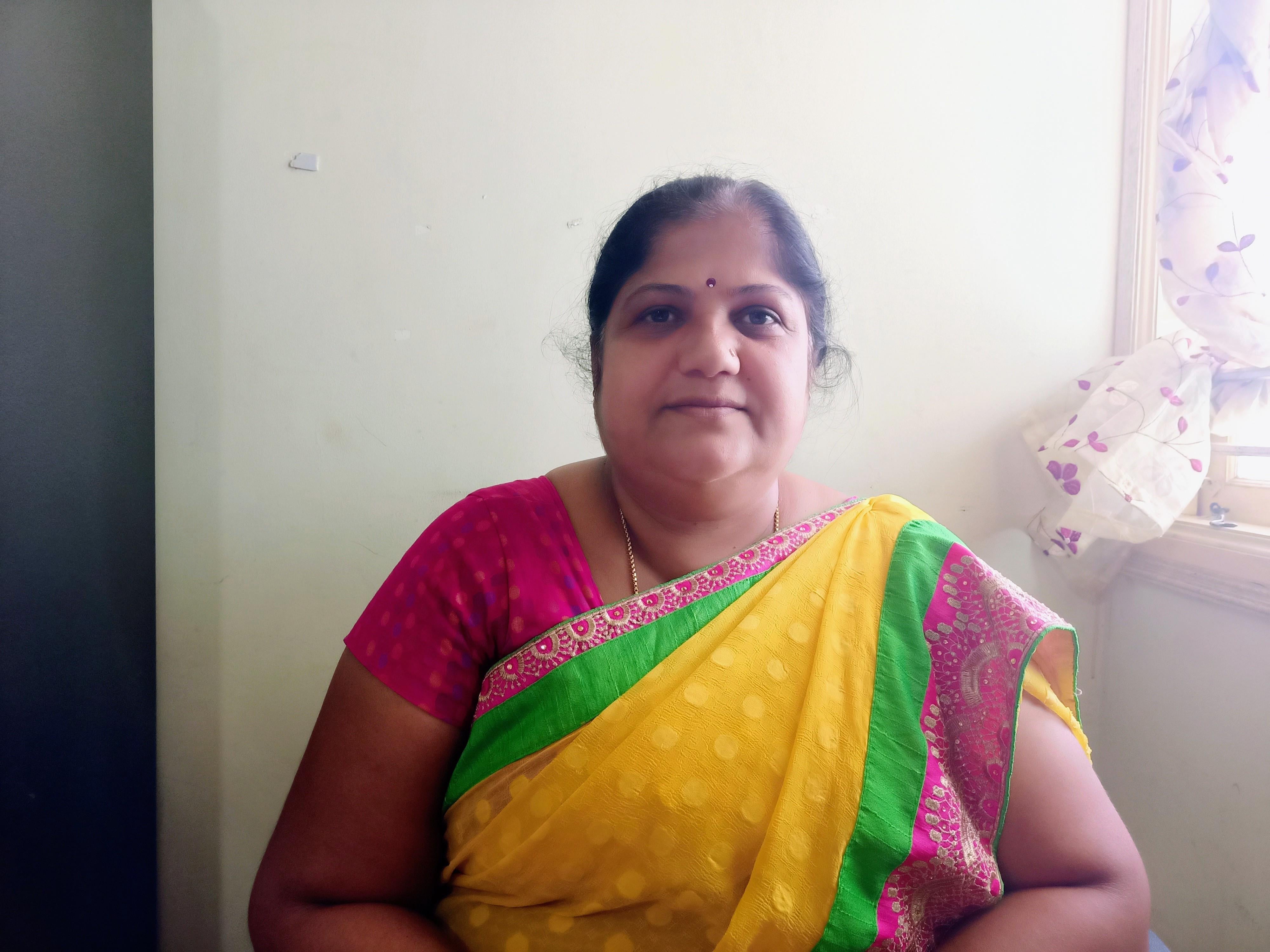
President of Garment Labour Union based in Bengaluru, Karnataka state and co-chair of the Women’s Leadership Committee of Asia Floor Wage Alliance.
I worked as a tailor in garment factories for 23 years. I saw all kinds of sexual harassment, verbal abuse, impossible targets, and lack of benefits. I became a target when I joined a union and started speaking out for others. The managers tried to publicly humiliate me by criticising my work. They wouldn’t grant my holiday requests. They even followed me to the toilet.
Many garment workers don’t have much education or any awareness of their rights. They’re women who go from being controlled by men at home to being controlled by men at work. Brands and factories exploit this by paying them very low wages, threatening salary cuts for absence, and refusing to give them long-term contracts so they remain vulnerable.
It’s clear brands only respond to crises when they have to – this is why putting global pressure on them to protect workers is so important. Women are more powerful when we work collectively. That’s why we need unions, and for unions to work together.
3. Lalitha Dedduwakumar, Sri Lanka

Co-chair of the Women’s Leadership Committee of Asia Floor Wage Alliance and chief organiser and founding member of Textile Garment and Clothing Workers Union.
During Covid, apparel sector workers were declared essential workers in Sri Lanka. At the same time, all workers suffered temporary pay cuts of 50 per cent. This meant some people couldn’t afford to get to work. Now, the government is rewarding state sector workers with a 5,000 Rupee (£12) pay rise, which will increase monthly wages by about 10-15 per cent, but garment workers aren’t entitled to this.
There are several reasons for this discrimination, including race and class issues. But, the main one is that the vast majority of garment workers are women. It’s not unheard of for women to be nicknamed after the machines they work on – for example “Juki Kalla” (“Juki” is the sewing machine brand, and “Kalla” is a derogatory way of saying “a girl”) or “Juki Baduwa” (“Baduwa” implies someone is a prostitute and is also a way of slutshaming) – rather than by their names.
There’s a structural violence against women that has become normalised in society and it has become normalised inside the factories as well. That’s why we founded a trade union led by female ex-apparel sector workers.
It takes a lot of courage for women to join a union and to stand up for themselves and each other. They risk their job, intimidation, and discrimination from employers. It’s especially difficult for women who are used to being controlled to show leadership. What’s incredible is that when a woman becomes used to working in a safe environment and she is treated with dignity and respect, it changes her expectations of how she is treated in her home and community, too.
4. Zehra Khan, Pakistan

Founding member and general secretary of Home Based Women Workers Federation (HBWWF). Also a member of many tripartite committees in Pakistan, including the Sindh Home Based Workers Governing Body.
Change is coming. Not just in the workplace, but also in the home. One woman told me her husband no longer hits her because she’s not isolated anymore, she now has 3,000 union members standing behind her.
It’s a common story. Domestic abuse declines when men consider their wives to be more equal partners in earning money and running the household. Men are now joining our union too, and even those that are not members are coming to us for advice and legal support.
Our union is the first one created for Pakistan’s so-called “invisible workers” – the home-based workers, which we estimate accounts for about 12 million women in Pakistan.
Home-based workers typically work 12- to 14-hour days. They use their own electricity and gas. They receive very low wages, sometimes paid in other currencies, and often their daughters assist with the work for no payment at all.
When we founded the HBWWF, our initial goal was to create a cooperative where women could support each other and negotiate collectively. Then we realised they didn’t just need help starting a business. We needed to make home-based workers visible in the eyes of the law.
Following almost a decade of protesting in the streets and meetings with legislators, the first legislation that recognised the rights of home-based workers was passed, in 2018.
In the early days, we had to persuade women of their rights and they were afraid to take part in protests. Now they ask when the next demonstrations are and they chant slogans in the streets.
5. Heng Chenda, Cambodia

Vice-president of the Cambodia Labour Confederation.
As a garment worker I witnessed lots of violence and injustice. At the time, I didn’t understand the law, but I knew in my heart to demand for more.
It’s not easy because these problems stem from societal issues, where women aren’t considered equal to men. The laws aren’t in favour of workers. Factory owners bribe police and hire gangsters to intimidate us. But, if we don’t challenge this now, future generations will face the same violations.
Our goal is for all girls and women to understand their rights and be able to stand up for themselves. We do this by working to increase the amount of female managers in factories and female leaders in unions – and to ensure their leadership is respected. At the same time, we campaign for labour laws that give women maternity rights and criminalise gender-based violence.
Lizzie Rivera, founder of sustainable lifestyle hub Live Frankly www.livefrankly.co.uk




Join our commenting forum
Join thought-provoking conversations, follow other Independent readers and see their replies
Comments